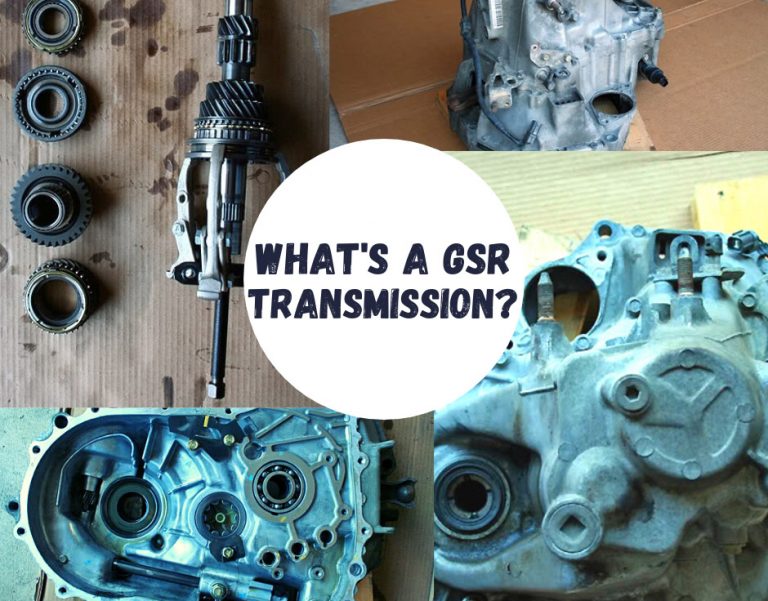Do You Polish Before Ceramic Coating? Essential Tips for Flawless Results
Polishing your car before applying a ceramic coating is a topic that often comes up among vehicle owners. You might wonder if it’s necessary, and if so, why? Well, there are a few reasons why taking the time to polish your ride prior to using a ceramic coating is recommended.
Firstly, polishing your car’s paint ensures that it’s thoroughly clean, providing the best possible surface for the ceramic coating to bond to. This, in turn, helps the coating achieve its full durability potential. Additionally, polishing removes any light defects that might be present on the surface, resulting in a smoother finish overall.
Now that you know the benefits of polishing your vehicle before applying a ceramic coating, it’s important to remember that this process should ideally be done once or twice a year. Not only will this help maintain your car’s appearance, but it will also support the clarity of the clear coat. With these steps in place, you’re well on your way to achieving a beautiful, protected finish for your car.
TLDR Summary
Before applying a ceramic coating to your car, it’s essential to polish the paintwork. Polishing removes any dirt and light defects, allowing the ceramic coating to bond better with the surface. This process results in improved durability and protection for your vehicle. In this section, you’ll find some key points and tips to keep in mind when preparing your car for a ceramic coating.
- Start by washing your car with a quality shampoo to remove surface dirt, grime, and contaminants. This will give you a clean canvas to work with.
- Use a clay bar to remove any remaining contaminants embedded in the paint. This step further ensures that the paint is as clean as possible, which is essential for a good ceramic coating application.
- Now it’s time to polish your car. Choose a high-quality polish that’s suitable for your vehicle’s paint type. Work in small sections, using a polishing pad or microfiber cloth to evenly spread the polish. This will help eliminate light scratches, swirls, and other paint defects.
- After polishing, remove any residue using a clean microfiber cloth. Make sure to inspect your work to ensure a uniform finish, as the ceramic coating will lock in any remaining defects.
- Once your car’s paint is thoroughly cleaned and polished, you’re ready to apply the ceramic coating. Follow the manufacturer’s instructions for best results, and enjoy the added protection and enhanced appearance of your vehicle!
Remember, proper preparation is key when applying a ceramic coating. By following these steps, you’ll ensure an impressive finish and long-lasting protection for your car’s paint.
Understanding Ceramic Coating
What is Ceramic Coating
Ceramic coating is a liquid, nano-based protective coating applied to your car’s paintwork. It creates a hydrophobic, transparent layer on the surface. This coating chemically bonds with the paint, providing long-lasting protection and enhanced gloss levels. Ceramic coatings come in various forms, such as ceramic spray coatings and professional-grade coatings, offering different levels of durability and protection to suit your needs.
Ceramic coatings provide many benefits, some of which are listed below.
Benefits of Ceramic Coating
- Paint Protection: By forming a protective layer over your car’s paint, ceramic coatings shield the surface from contaminants like dirt, bird droppings, and chemicals. This ultimately protects your vehicle from minor scratches and paint damage.
- Durability: Ceramic coatings provide long-lasting protection, with some high-quality options lasting for several years. Their strong chemical bond with your car’s paint ensures optimal durability.
- Hydrophobic Effect: One of the most appealing aspects of ceramic coatings is their hydrophobic effect. This feature causes water to bead up and roll off the surface, protecting your car from water stains and etching.
- UV Rays Protection: The sun’s ultraviolet rays can cause oxidation and fading of your car’s paint over time. Ceramic coatings help protect against these harmful rays, maintaining the vibrancy and color of your vehicle.
By understanding the benefits and purpose of ceramic coatings, you can take an informed decision on whether or not to apply one to your car. Don’t forget that it is very important to polish your car’s paint before applying a ceramic coating to ensure the proper bonding of the coating and the best possible results.
Preparing Your Car for Ceramic Coating
Car Washing
Before diving into the world of ceramic coating, you need to start with a thorough car wash. This step is essential for removing dirt, dust, and grime. Be sure to choose a wax-free car shampoo, as it will help strip away any remaining waxes or sealants and leave the surface residue-free. It’s important to take your time during this step, and don’t forget to give your vehicle a good rinse with water.
After it’s squeaky clean, use microfiber towels to dry the surface and avoid water spots. Remember, proper prep work is key to achieving the perfect DIY ceramic coating.
Decontamination
To get rid of any tough contaminants, you’ll want to decontaminate the surface chemically. This process typically involves using a clay bar. Simply glide it across the surface of your car to pick up any lingering contaminants such as tar, iron particles or even tree sap.
While you’re decontaminating, if you come across any stubborn spots, you can reach for a tar remover to come to your rescue. After claying, you’ll want to give your car another rinse and dry it off again with microfiber cloths.
Paint Correction
Swirls and scratches on your car’s paint can be a real eyesore, but paint correction is here to help! First, identify any areas that need polishing and select a suitable polishing compound. When using an electric polisher, opt for a dual-action machine polisher, as it will provide an even and consistent result.
Gently buff the surface in a controlled motion to remove any light defects and achieve a smooth finish. Take care not to apply too much pressure, and wipe away any excess polish with a clean microfiber cloth. This step is crucial for ensuring that your ceramic coating bonds well with the paint.
Applying the Sealant
Once the prep work is complete, it’s time to apply your paint sealant. This final step helps lock in the results of your cleaning and polishing effort. Apply the sealant according to the manufacturer’s instructions, making sure to cover all treated areas evenly. Use a microfiber cloth or applicator pad for the best results.
When you finish applying the sealant, follow any final curing or drying instructions before subjecting your car to the elements. By taking your time and following these steps, you’ll achieve a flawless ceramic coating on your car that not only looks great but provides lasting protection too.
Why Polish Before Ceramic Coating
Benefits of Polishing
Polishing your car before applying a ceramic coating is very important. This process improves the bond between the coating and your car’s paint, ensuring maximum durability and protection. Furthermore, polishing makes the paint look fresh and enhances its gloss, bringing out the vehicle’s true colors. So, when you polish your car’s paintwork, you’re not only preparing it for the ceramic coating but also giving it a visual upgrade.
Scratches and Imperfections Removal
Nobody wants visible scratches and imperfections on their car’s surface. Luckily, polishing helps remove light defects, such as swirl marks and scratches, before applying the ceramic coating. By doing so, you’re able to achieve a smoother and clearer finish, making your car look like new. In addition, this process also helps eliminate oxidation, which can dull your car’s paint over time.
When you’re polishing, remember to use a microfiber towel to gently wipe the car clean after each session, ensuring that no residue is left behind. This process may also involve some paint correction when removing deeper scratches. After polishing, you might want to consider claying your car to remove any remaining contaminants before applying the ceramic coating.
Polishing your car helps remove imperfections and prepares the surface for ceramic coating application, which in turn provides a protective layer for the paint and the clear coat. This process is essential for achieving optimal results and maintaining your car’s appearance. So next time you plan on applying ceramic coating, remember to dedicate some time to polishing your car first – your vehicle will thank you for it.
Selecting the Right Polish and Tools
Types of Car Polishes
When it comes to selecting the right polish for your car, it is very important to consider the specific needs of your vehicle’s paint. There are two main types of car polishes: abrasive and chemical. Abrasive polishes contain tiny particles that work to remove small scratches and imperfections, whereas chemical polishes break down the top layer of paint to reveal an even gloss level.
- Abrasive polishes are more effective for deep scratches and heavy oxidation, but require careful application to avoid damaging the paint.
- Chemical polishes are gentler and work well for removing light swirls and enhancing paint gloss.
Make sure to choose a pH neutral polish to protect your paint’s integrity.
Polishing Tools and Techniques
After selecting the right car polish, it’s time to consider the tools and techniques for applying it. For machine polishing, an electric polisher can provide efficient and consistent results. However, using an electric polisher requires some practice to avoid damaging your paint. Alternatively, hand polishing with a microfiber towel can offer a more controlled approach.
- Electric polisher: Use a dual-action or random orbital polisher with a foam pad to minimize the risk of damage. Start with a low speed and increase gradually, ensuring you maintain even pressure and a consistent motion.
- Hand polishing: Apply a small amount of polish to a clean microfiber towel and work it into the paint using a back-and-forth motion. Apply moderate pressure and maintain a smooth, even motion throughout.
Before polishing, it’s essential to wash your car using a proper wash technique. Use a pH neutral soap with a microfiber wash mitt to remove dirt and debris that could scratch your paint during the polishing process.
As you polish your vehicle, remember to work methodically, focusing on one panel at a time. Once you’ve achieved an even gloss level, you’ll be ready to apply the ceramic coating.
Final Touches Before Applying Ceramic Coating
Claying
Claying is an essential step before applying a ceramic coating to your car. You want to make sure that your car’s paint is free of any contaminants that might interfere with the coating’s bonding process. Don’t worry, claying is simple! Here’s what you need to do:
- Get a high-quality clay bar or clay mitt (you can find these at most auto supply shops).
- Apply a generous amount of lubricant (usually a clay spray) to a small section of your car’s paint.
- Gently rub the clay bar or mitt over the lubricated area, picking up contaminants as you go. You’ll notice that the clay will become dirty, showing that it’s working.
- Continue the process, working in small sections, until you have covered the entire car.
Don’t forget to fold or knead the clay periodically to expose a clean surface. This will ensure you’re always using a fresh, clean side of the clay.
Removing Residues with Isopropyl Alcohol
Once you have completed claying, it’s time to remove any remaining residues before applying the ceramic coating. An isopropyl alcohol (IPA) solution is perfect for this task, and here’s how to use it:
- Mix a 50/50 IPA solution with water (50% isopropyl alcohol, 50% water).
- Spray the solution onto a clean microfiber cloth; avoid spraying it directly onto your car’s paint.
- Wipe down your car’s surfaces, working one panel at a time, using a side-to-side motion.
- Replace any soaked microfiber towels with fresh ones to reduce streaking and ensure a clean surface.
By following these two steps – claying and removing residues with isopropyl alcohol – you can provide the best possible surface for the ceramic coating to bond. And that means a beautifully protected car with a long-lasting, durable shine. Happy coating!
Hiring a Professional Detailer
Pros and Cons of Professional Detailing
Hiring a professional detailer has its own set of pros and cons. Among the pros, a professional detailer provides expert knowledge and experience in the car detailing field. They have the right tools and products to ensure both the polishing and ceramic coating processes are done properly. This can give your car that much desired showroom finish.
On the other hand, the cons of hiring a professional detailer mainly revolve around cost. Getting a professional detailing service might be more expensive than doing it yourself. Additionally, it can be time-consuming as well, since you need to find a reliable and trustworthy detailer to handle your vehicle.
When to Choose a Professional Service
Here are some guidelines to help you decide if hiring a professional detailer is the right choice for you:
- Lack of experience: If you don’t have any background or experience in car polishing and ceramic coating application, it’s best to leave it to the professionals. They can guide you through the process and ensure a flawless finish.
- Limited tools and products: Professional detailers use specialized tools and products not always available to the average car owner. If you don’t have access to these, a professional service might be your best option.
- Desire for a showroom finish: If having a car with a showroom-like finish is very important to you, then investing in a professional detailer is the way to go.
Remember, deciding whether to hire a professional detailer is ultimately about your budget, time, and expectations. Consider the pros and cons and when to choose a professional service before making your decision, so that you can confidently enjoy the end results of a well-polished and ceramic coated car.
Wrap Up!
Polishing your car before applying a ceramic coating is very important. It helps to clean the surface and remove any light defects from the paintwork. When you take the time to polish, you’re giving the ceramic coating the best surface to bond to for optimal durability.
There are some essential steps to follow in preparing your vehicle for a ceramic coating. Wash your car using a wax-free, gloss-free soap like Clean Slate. This type of soap not only removes dirt but also strips away any remaining sealants, waxes, or glazes on the paint. Your ceramic coating will bond best when the surface is residue-free.
After washing and polishing, you’ll want to thoroughly clean your vehicle’s surface using an IPA (isopropyl alcohol) mix and microfiber towels. Wipe each panel one at a time to ensure the IPA blend does not sit for too long. Replace soaked microfiber towels as needed to reduce streaking, and always work in straight, side-to-side lines.
Remember, taking the time to properly prep your car for a ceramic coating will make all the difference in the end result. Ensuring your paint is completely clean and free of defects will allow the ceramic coating to bond properly and provide maximum protection. So, grab your supplies and make your vehicle look spectacular!







